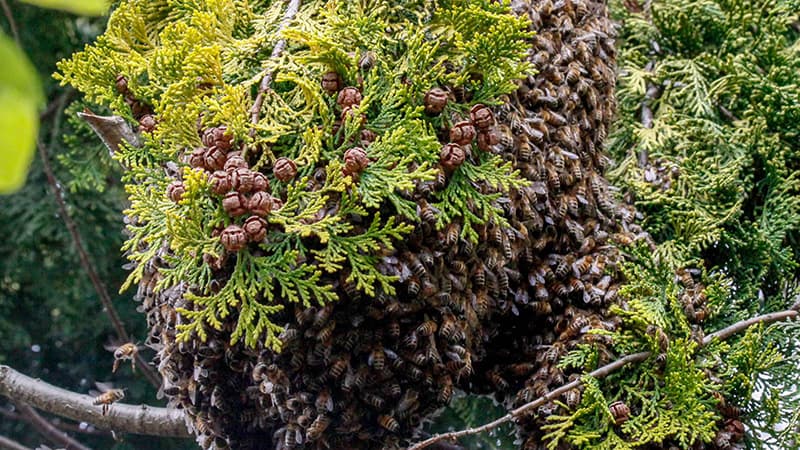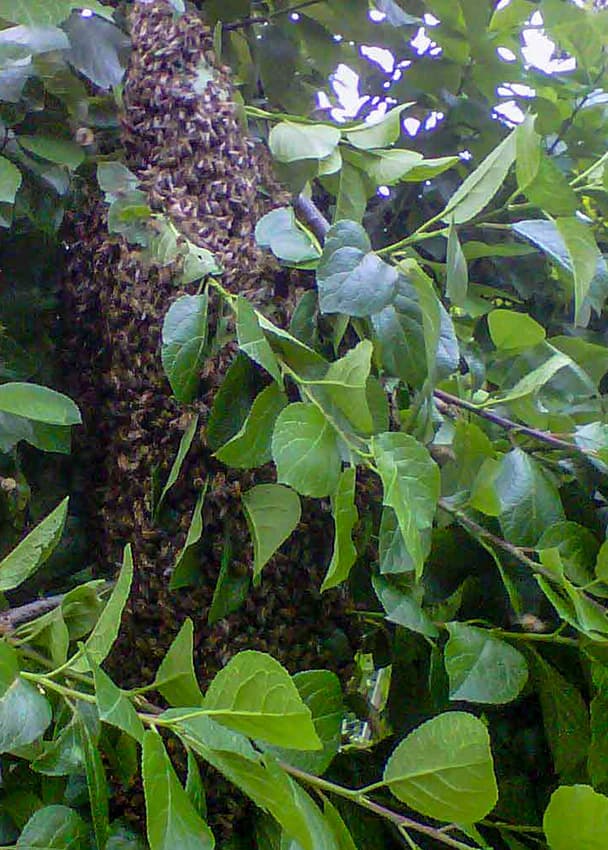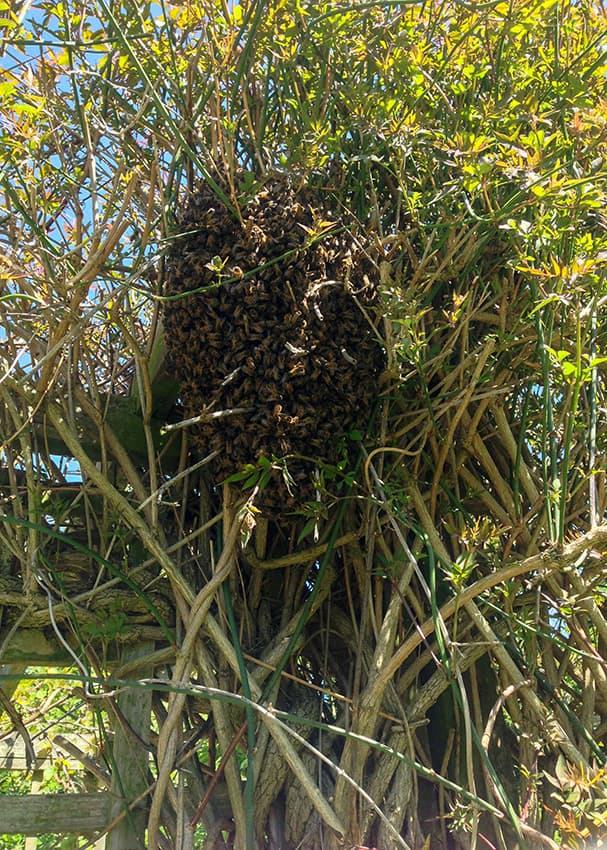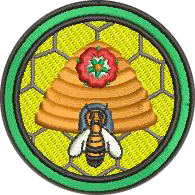Swarm Information
Honeybees swarm from April to July. Swarming is the natural way a honeybee colony divides to produce two colonies. About half the number of bees in the colony leaves with the queen honeybee and look for a new home. The remaining bees stay in the old hive with a new queen.
The process secures the survival of the colony, which gets a young queen in replacing her ageing mother. Beekeepers try to prevent their colonies swarming for a variety of reasons. For example, swarming depletes their stock of bees and reduces the honey crop. A swam starts by consuming as much honey as it can for setting up the new home. Swarms can also settle where they are not wanted, such as in domestic buildings.
A swarm can consist of many thousands of bees. Once it leaves the hive, it usually settles on a branch or post not far away from the hive and forms a cluster. Somewhere in the cluster will be the queen. She gives off scent substances called pheromones, which have the effect of holding the cluster together.
While the swarm remains in a cluster, scout bees search for a suitable new home. When a suitable place is found, the swarm will move and take up residence there. The swarm can remain in its cluster for anything between a couple of hours or a few days.

What to do if you see a swarm or have one in your garden
Don’t panic! Honeybees sting when they are protecting their nest or they are frightened. In addition, honeybees in a swarm have gorged themselves on honey prior to leaving the hive and thus they physically cannot bend their abdomens sufficiently to sting. It is therefore extremely unlikely that bees in a swarm will sting you. However, to avoid any risk leave the bees alone. Do not try poking them with sticks, throwing stones at them, or lighting fires under them in the hope they will move. When the swarm has settled, contact us on the telephone number below.
Provided the swarm has settled in an accessible place a beekeeper should be able to capture the swarm and introduce it to a new hive. This is a voluntary service, and the beekeeper may ask for recompense for any costs incurred, e.g., travel expenses in collecting the swarm. Please be aware that beekeepers will be unable to collect swarms that are in inaccessible places such as the top of trees, in a chimney, inside cavity walls etc. They will only collect honeybee swarms. For inaccessible swarms, wasps and hornets and other insects you will need to contact pest control people who will charge for the service, though some councils provide these services.
Taking in swarms helps us in our effort to control the spread of honeybee diseases. It also helps us control the reproduction of less desirable genetic traits in honeybees. Also, swarms are given to any new member beekeeper waiting with a brand new hive ready for its first occupants.


Types of Bees
Bumblebees are often confused with honeybees. However they are rounder, larger and furrier and come with a variety of coloured stripes across the end of their tails. Are they nested in a bird box, under the decking or in the compost, if so leave them alone if possible. Bumblebees are an important pollinator and rarely sting. By the autumn they will evacuate their home as only the newly mated queen survives to hibernate, unlike honeybees. For more information about bumblebees visit the Bumblebee Conservation Trust website.
Wasps – are they very smooth, mainly yellow with black stripes? Is there a brown, football sized nest in the roof of your house? Are they coming from a nest in a tree? Is there a nest in the shed? Do they have a high pitched buzz? Are they after all things sweet? Then these are probably Wasps.
Solitary Bees – are there lots of small bees coming and going from small holes in the ground or in a wall? Are they reddish, brown or almost black? These are Solitary Bees, they are harmless and as their name suggest live more or less alone. They aren’t interested in you and should be left alone.
Honeybees are small and vary in colour from golden brown to almost black. Please note if you have honey bees in the structure of your property, the local voluntary swarm collector will not be able to remove them.
For further more detailed information and to find a local swarm collector follow this link to the British Beekeeping Association’s Swarm Information page.
